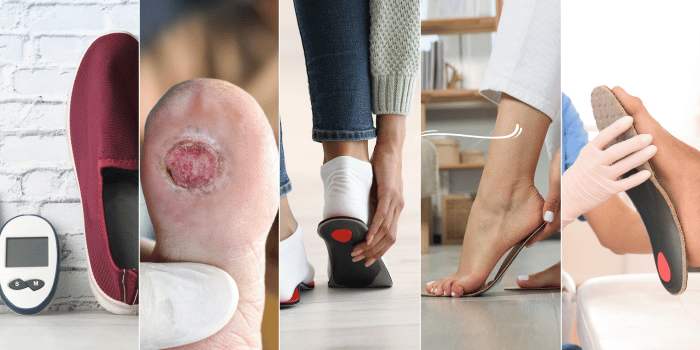Diabetic Foot Care & Customised Footwear
Patients with diabetes often suffer from neuropathy and peripheral vascular disease, which lead to reduced sensation and poor wound healing, especially in the forefoot and heel areas. This makes them prone to plantar ulcers, calluses, Charcot foot, and even amputations if unmanaged.
Role of Customised Diabetic Footwear:
Custom footwear for diabetic patients is not just about comfort, but pressure redistribution and preventing further breakdown. These shoes are custom-designed based on pressure mapping, foot shape, ulcer location, and biomechanical needs.
Heel Offloading: Why It Matters
The heel bears major pressure during the heel-strike phase of walking. In diabetic patients with heel ulcers, fat pad atrophy, or posterior calcaneal wounds, offloading is crucial.
Technical Offloading Features:
- Heel cup reliefs or cut-outs
- Rocker soles to reduce heel pressure on contact
- Float zones or soft heel inserts
- Heel suspension orthoses for severe ulcer cases
Clinical Benefits:
- Reduces vertical load and shear
- Promotes ulcer healing
- Prevents decubitus ulcers in immobile patients
Forefoot Offloading: Critical for Ulcers Under Toes & Metatarsal Heads
The forefoot is highly vulnerable, especially in patients with:
- Great toe amputations
- Metatarsal head ulcers
- Hammer toes or claw toes
- Non-healing distal wounds
Technical Solutions Include:
- Rocker bottom soles to shift weight from forefoot to midfoot
- Custom inserts with forefoot depressions (ulcer-specific cavities)
- Stiff soles to limit forefoot flexion
- Toe fillers or custom last shaping in case of toe amputation
Clinical Benefits:
- Reduces peak plantar pressure in the forefoot
- Prevents recurrence of ulcers
- Helps in biomechanical gait correction
- Improves patient compliance through pain relief
